- Our Products
- Upper Extremity
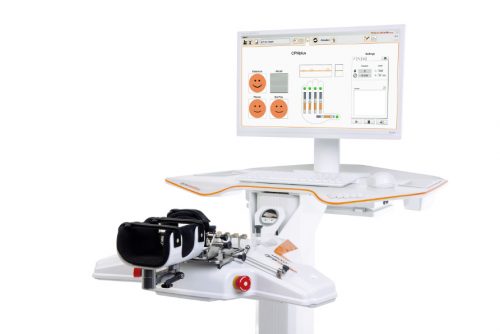 AMADEO The hand therapy world champion
AMADEO The hand therapy world champion
Boredom in finger-hand rehabilitation? Not with AMADEO! Motivation in the course of therapy is just as essential as fingers and hands are for daily life. Regardless of whether it is an adult or child, AMADEO increases therapeutic ambition with sophisticated robotics and a playful approach, and also visualizes the smallest successes in all phases of rehabilitation. Bottom line: AMADEO is simply unique.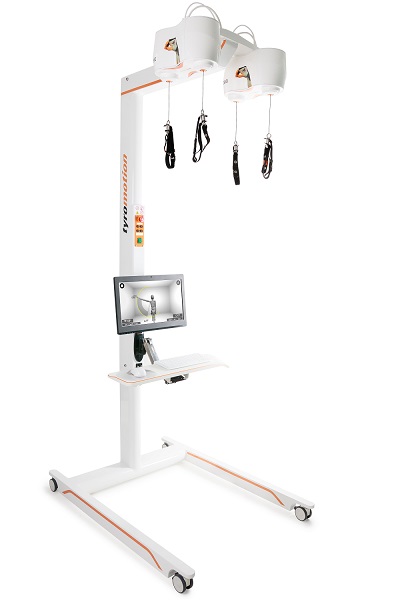 DIEGOBilaterally back to life
DIEGOBilaterally back to life
Finally go fishing again? DIEGO® skilfully assists patients with its unique intelligent weight relief. With its three-dimensional therapeutic area and virtual reality, DIEGO® enables the ideal transfer of what you have learned into everyday life – exactly with the required support. Nothing more and nothing less.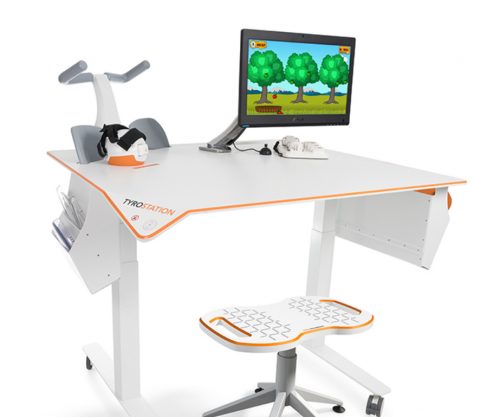 TYROSTATION Endless options, well organized
TYROSTATION Endless options, well organized
Anyone who is as versatile as PABLO® and TYMO® needs structure to really unfold. The Tyrostation is home to all individual components of our two all-rounders and also provides perfect ergonomic adaptability for every patient.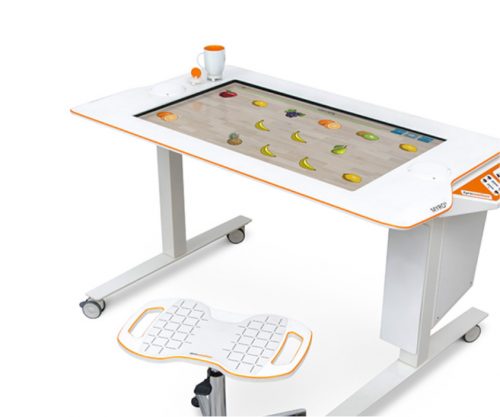 MYRO Full of variety, versatility, innovation and creativity
MYRO Full of variety, versatility, innovation and creativity
Real objects, power control, touch applications and a whole lot of fun: this is what constitutes goal-oriented, intuitive therapy with MYRO. The sensor-based surface is the basis for creative therapy which brings about meaning and self-determination in daily life.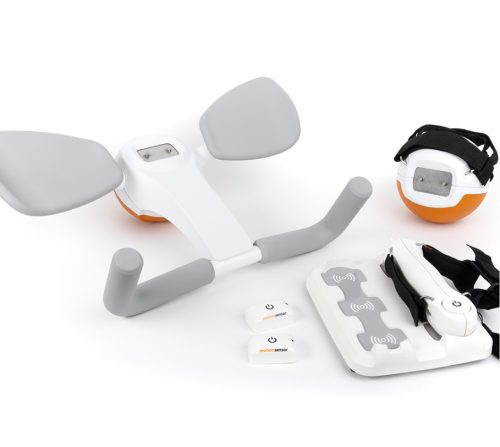 PABLO As versatile as life
PABLO As versatile as life
PABLO® is an all-rounder when it comes to activities of daily living. Position sensors and numerous accessories open up incredibly versatile therapeutic options in a safe environment for patients of all impairment levels.
- Lower Extremity
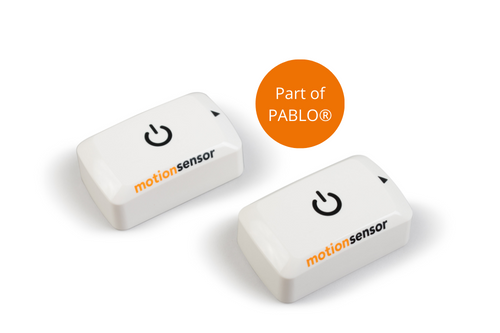 PABLO Lower ExtremityPart of PABLO®
PABLO Lower ExtremityPart of PABLO®
Always know where therapy is going
PABLO® Lower Extremity, our gait analysis and training system, precisely measures the parameters which are required for the selection of the most effective therapeutic measures for gait improvement. Simple and location-independent application as well as size-independent measurement makes the package complete – small device, great effect!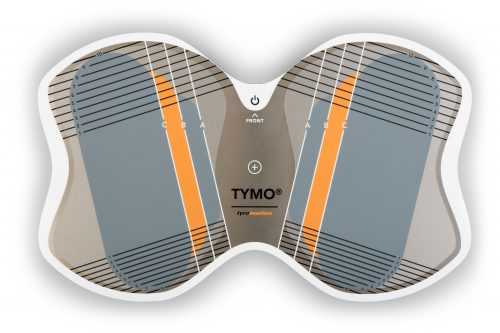 TYMO Balance in perfection
TYMO Balance in perfection
TYMO, a portable posturography system and the world’s thinnest balance platform. Flexible in application, TYMO trains postural control in a sensitive, specific and meaningful manner, and is therefore the basis of all movements. Motivation and fun are included.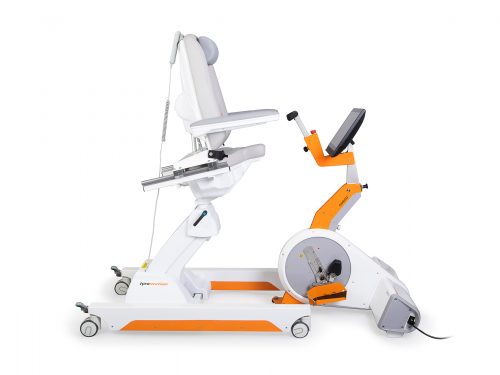 OMEGO Plus Therapy for all phases of gait rehabilitation gone motivational
OMEGO Plus Therapy for all phases of gait rehabilitation gone motivational
Two separate drives mobilize the patient in an effortless, isolated and focussed manner, and therefore make OMEGO® the long-desired stopgap between mobilization and locomotion. What else remains for patient and therapist to do? Train in a motivated manner, have fun and achieve goals.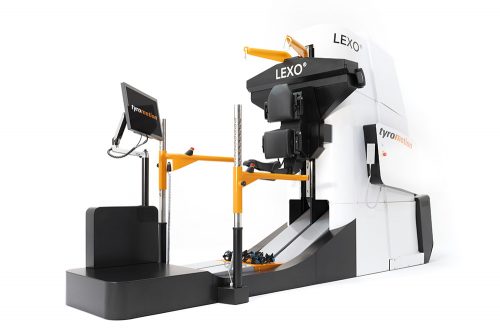 LEXOGait training at its best
LEXOGait training at its best
Maximum number of steps and intensity, low in height, easy handling and fast setup time: Impossible? It works! With LEXO® patients take the first impressive steps back to mobility and enjoy the feeling that things are finally getting better again.
- MTT-Line
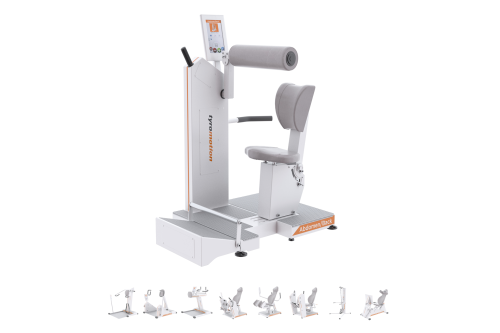 MTT-Line Medical training therapy
MTT-Line Medical training therapy
The barrier-free MTT-LINE specifically strengthens the six major muscle groups of the human body.
- Software
 TyroS The heart of our technology
TyroS The heart of our technology
Our TyroS software – developed by and together with therapists – is the heart of our technology that combines devices, know-how and therapeutic games. It is a sophisticated therapeutic system that helps challenge and encourage patients.
- Upper Extremity
Health
Stroke and Yoga: What´s the Evidence?
14. February 2022 ● 5 min. Reading time
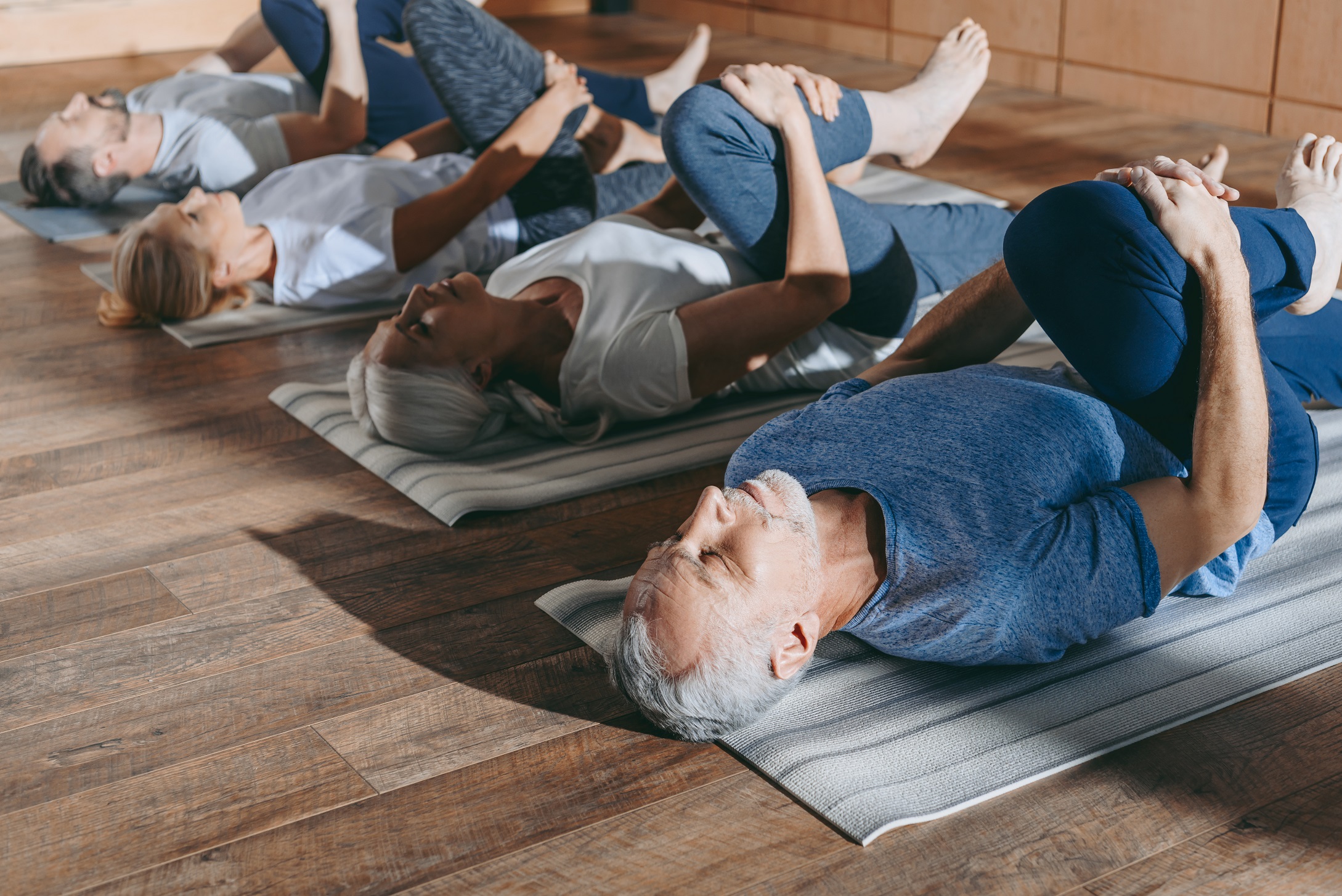
How can Yoga provide support after a stroke?
After a stroke, problems with movement, balance, and perception can occur. Language, concentration, and memory are also frequently affected. The new life situation can lead to psychological problems or depression.
As a complementary therapeutic measure, Yoga can have various health benefits, regardless of the clinical picture:
- Strengthening of muscles, bones, tendons, and ligaments
- Improvement of mobility and range of motion
- Promotion of mindfulness, concentration, and the ability to relax
- Improvement of balance, proprioception, and postural control
- Reduction of stress, depressive moods, and states of anxiety
- Promotion of well-being and social factors
- Training of brain and memory functions
- Reduction of pain
Making mistakes for neuroplasticity
After a stroke, it is necessary to learn how to cope with the new life situation. Movements that used to be automatic, have to be relearned. This is where Yoga can be a valuable support.
The mat is the testing laboratory: Movements that are needed in everyday life will be practised. If plan A doesn’t work, plan B may will. Mistakes are permitted and desirable. If toddlers always gave up the first time they landed on their bottoms, they would never learn to walk.
Even if a certain exercise doesn’t work yet, the movement pattern can be worked on. Perhaps part of the movement is successful or the necessary muscles can already be consciously controlled. These are successes. Celebrate them!
For stroke survivors in particular, frequent repetitions are important to stimulate the damaged areas in the brain. The brain is able to regenerate dead cell tissue. Some streets in the neurological highway may be closed, but the brain will find diversions. This ability is called neuroplasticity.
Evidence for Yoga in stroke patients
The Cochrane Collaboration published a review of Yoga for stroke patients in 2017. As an international, independent organization, Cochrane is considered to be the gold standard for studies. Three statistically relevant results were found in the Cochrane Review of Stroke and Yoga.
For patients after a stroke, participating in a regular Yoga program
- improves memory performance,
- reduces the occurrence of feelings of anxiety, and
- increases the range of movement in individual parts of the body.
Data on Yoga for stroke patients
Overall, there is not much data on Yoga and strokes yet. There are not enough large, high-quality studies to clearly confirm the effectiveness and safety of Yoga for stroke patients. Nevertheless, there are many smaller studies that show a positive trend.
Yoga is a complex system of movement, breath, and meditation.
- Exercise strengthens muscles, bones, and the cardiovascular system. It improves coordination, endurance, and mobility.
- Conscious deep breathing leads to improved body awareness, mental and emotional relaxation, stress reduction, and increased breathing capacity.
- Regular meditation improves attention, emotional control, and stress management.
Yoga after stroke: What do I need to consider?
In the case of existing physical and/or mental limitations, a medical assessment is the first step before starting to practice Yoga.
No matter what the limitation is, Yoga is always possible. Yes, always. Yoga is much more than physical exercise. Even people with significant limitations can practice Yoga.
If a patient is sitting in a wheelchair, the upper body can be mobilized. Bedridden patients can work with visualizations. The brain cannot distinguish whether a movement is carried out or only thought about. The received stimuli reactivate the damaged brain areas. The yogic philosophy gives patients hope and can have a positive effect on mental health.
How do I start Yoga after a stroke?
An experienced teacher is essential. Ideally, he or she has already worked with other patients and knows how to adapt exercises beneficial for patients.
In patients with hemiparesis or hemiplegia, there is a risk that the practitioner will not feel potential damage. Instructors take on great responsibility in providing the right guidance. Some rehabilitation centers offer special Yoga courses for people who have had a stroke. Private lessons also can make sense.
It is best to ask the rehabilitation centre or the respective doctor if there are special courses for patients. Yoga studios in the area can also be the first port of call.
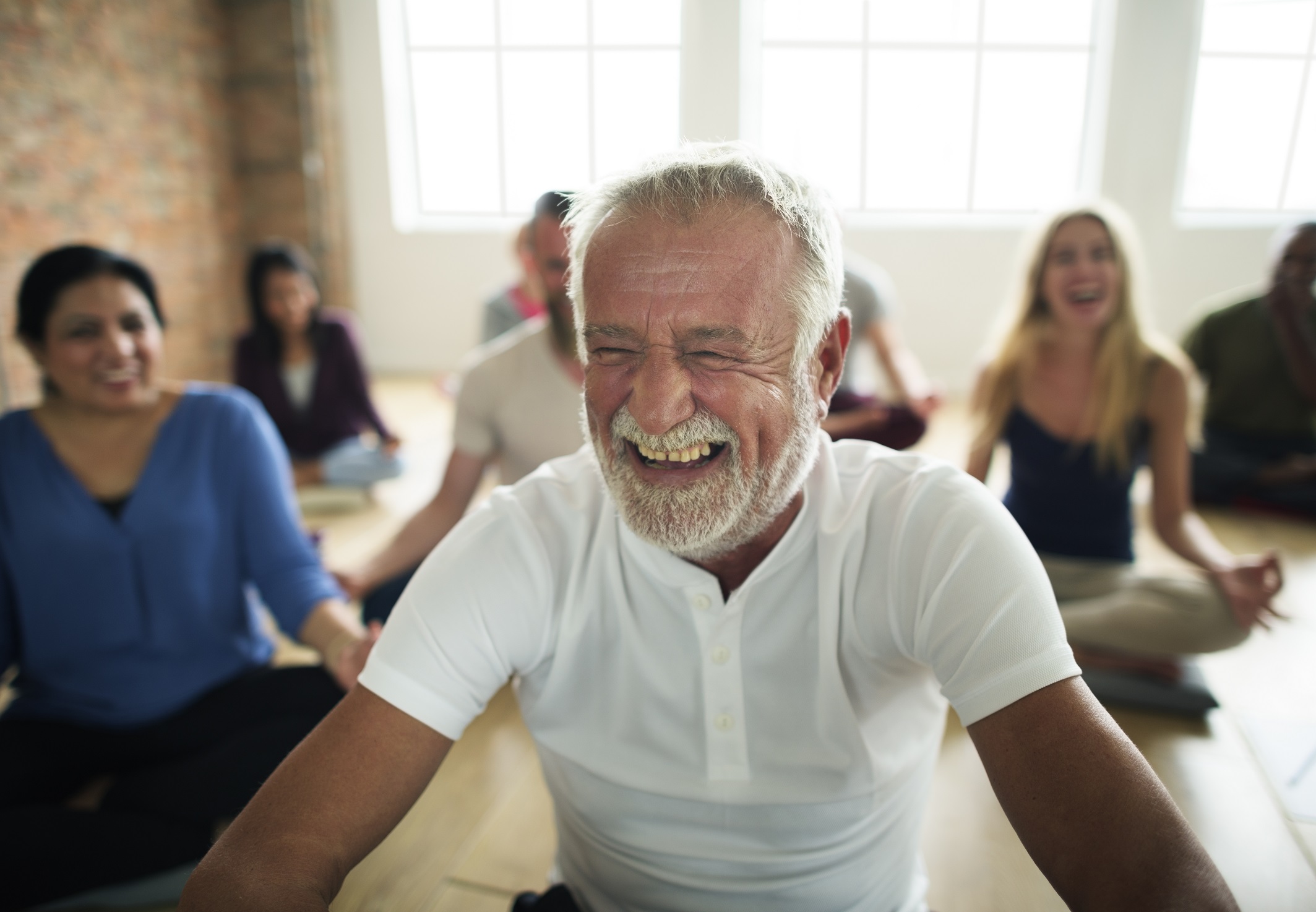
What style of Yoga is suitable for stroke survivors?
Yoga therapy combines the Eastern Yoga tradition with modern therapeutic approaches from the West. Breathing exercises, body positions and meditation are adapted to the individual needs of the client. Yoga therapy is a good way for patients to start practicing Yoga.
Hatha is more or less the original form of Yoga. The three pillars of Hatha are body, breath, and meditation. The disciplines come together to produce better awareness of the body. Hatha Yoga is a good place for stroke patients to start.
Iyengar Yoga focuses on body movements and breathing techniques. The precise execution of the individual poses is essential. Numerous aids such as blocks and straps may be used for support. Each pose can be individually adapted –Iyengar Yoga is suitable for stroke patients.
Yin Yoga is a calm style and is often used as a complement to more active disciplines. The positions are held for a long time to promote flexibility and relax the mind. The style is suitable for patients, people suffering from stress, or elderly people.
Forrest Yoga was founded by Ana T. Forrest. It is the Western Yoga response to modern life problems. The physical focus trains people to deal with and compensate for individual limitations and injuries better. Forrest Yoga is suitable for stroke patients.
Vinyasa Yoga is an active and dynamic style. The various physical exercises are strung together in flowing movements. Due to the high intensity, the style is initially less suitable for stroke patients.
Ashtanga focuses on the sequence of recurring series of exercises. The style is dynamic and physically demanding. Ashtanga is initially not recommended for stroke patients.
Yoga as a therapy after a stroke: Yes or no?
People with chronic illnesses or limitations often feel overwhelmed. Between doctor appointments and therapies, the desire to do something to aid recovery arises.
Yoga is accessible to everyone and promises great health benefits. A medical assessment is always advisable before starting to practice Yoga.
Patients should initially be supervised by experienced instructors. Mindfulness and honesty regarding the own limitations protect against physical overload.
Movement is good for the body, conscious breathing and meditation are good for the mind. When performed safely, Yoga can have a positive effect on patients’ physical and mental well-being.
Author: Michaela Partel
Sources:
Exploring the Therapeutic Benefits of Pranayama (Yogic Breathing): A Systematic Review (2020)
Depression and Anxiety Disorders: Benefits of Exercise, Yoga, and Meditation (2019)
Systematic Review of Yoga and Balance: Effect on Adults With Neuromuscular Impairment (2019)
Yoga Effects on Brain Health: A Systematic Review of the Current Literature (2019)
Mind-Body Interventions, Psychological Stressors, and Quality of Life in Stroke Survivors (2019)
The neuroscience of mindfulness meditation (2015)
Poststroke Balance Improves With Yoga (2012)
Mental Practice in Chronic Stroke (2007)
World Health Organization (2002) WHO Traditional Medicine Strategy 2002–2005. Geneva: World Health Organization
You might also be interested in
4. April 2023
Health
Rehabilitation
Stroke nutrition guidelines for optimal health
Nutrition as the key part in health and well-being of stroke survivors A healthy, balanced …
21. March 2023
Rehabilitation
Kinesio taping in neurology as a useful therapy supplement
The Kinesio tape and its usefulness in neurological therapy What was originally known only from …
7. March 2023
Rehabilitation
Exercises against freezing of gait in Parkinson’s disease
When the legs freeze – how does the symptom “Freezing of Gait” manifest itself? Parkinson’s …








